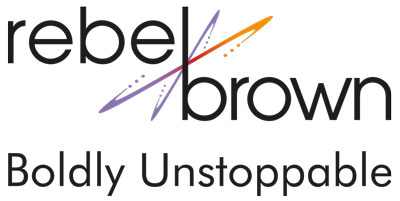The Relevance Gap continues to be one of the biggest threats in advanced technology markets. In any markets for that matter, but especially in advanced tech.
What’s the Relevance Gap? It’s the discrepancy between what buyers are interested in and what a business wants to tell them about their whizbang whatchamafloppy offering.
I’ve preached about the Relevance Gap to my clients for decades now. Yet it still remains.
Why does this continue to happen? For decades now?
Well, tech companies often assume their customers’ tech literacy matches that of their deepest engineers. I also experience situations where advanced technology innovators believe they know more about what the buyers want and need to know than the buyers do. Although all too often the Relevance Gap in high tech feels more like chest thumping over the coolness factor of a powerful new technology.
While I love cool tech, buyers want information that includes real-world, quantifiable value that applies to their business… not just a coolness factor that came from some science project or IT experiment.
Understanding the Relevance Gap
For decades we got away with the Relevance Gap. Why?
Because buyers had no other means to gather the information they needed to make purchasing decisions.
That all changed with the digital world. Buyers no longer need vendors to get key information. They certainly don’t want the “canned” sales pitches that have been the foundation of B2B sales. According to a recent study:
- Buyers are doing more and more research on their own before engaging in sales conversations,
- Buying committees comprise people who are craving more hyper-personalized, remarkable buyer experiences that stand out from the crowd of chatbots and repeatable playbooks.
- 80% of B2B buyers expect the same buying experience as B2C customers.
From go-to-market strategies and product launches that miss the mark to sales conversations that fail to compel, the Relevance Gap impacts our business in a myriad of ways.
The Business Impact
The Relevance Gap is most noticeable in marketing and sales, although it begins with product definition and strategy missing the mark of true buyers needs. But let’s focus on sales and marketing here.
The Relevance Gap results in a number of business impacts:
- Decreased effectiveness of marketing efforts, from investor and public relations to campaigns and programs to sales materials and tools. Without relevance, even the most creative or well-funded marketing will fail to resonate with buyers. This misalignment often results in poor marketing performance and can drive away buyers with a flavor of Me Me Me chest thumping.
- Loss of sales productivity as reps share the same irrelevant stories and information. Even the best rep can’t influence a buyer with less than compelling information.
- A persistent Relevance Gap erodes trust and relationships between vendors and buyers. When a buyer feels that a vendor does not understand or, worse yet, care about their needs, they are more likely to walk to a competitor. When an entire market of vendors over-hype a new innovation, share data that can be seen as misleading and generally pump their fists loudly about their cool tech, economic buyers often slam on the brakes, demanding real evidence of value before they make any investment.
In today’s digital age where buyer quickly share their negative views, the Relevance Gap can especially wreak havoc on an emerging market, a new innovation or a potentially breakout solution.
Just look at Quantum Computing and Artificial Intelligence. The huge “hype” of the cool tech, coupled with a long maturation cycle, resulted in buyers shifting from astonishment at the tech to concerns about the reality of its value. Welcome to the coming “winter,” and everyone wonders why it happens. (Yes, AI is hot now, but AI had its own very, very long winter…but that’s another story.)
Closing the Gap
One of the challenges my clients often face is shifting the thinking of both their business and technology leaders. Each and every one truly believes that what they are telling their markets and buyers is exactly what they want and need to know.
The problem is, it isn’t compelling, and in many cases it is downright confusing.
My theory on that one is simple.
- Brilliant technologists create kick ass new technology.
- Brilliant technologists don’t usually know how to explain that technology to economic buyers.
- Nor do they usually understand the business of their target buyers, the intricacies of that business and the challenges the overall business is facing.
- They do understand what the deeply technical buyers want and need to know. But that doesn’t always flow well into the economic buying audiences.
So how do you close this gap? Following are a few ideas
- Be Thoughtful About Advanced Analytics: In the era of AI and ML, the capacity for data analysis has never been greater. Advanced analytics tools allow tech businesses to gain deeper insights into customer behavior, preferences, and knowledge levels. Yet I believe we rely too much on the analytics and not enough on the personal experiences we have with buyers. Believing that clicks or forms or views is a sign of buyer motivation is flawed in advanced technology markets. Instead, we can shift our perspective on analytics to see them as measures of our execution – not of our messaging
- Make the Technology Simple: Remember, not all customers are tech-savvy. Aim to simplify and demystify your technology for your economic buyers. Utilize simple language, relatable analogies, and clear use cases to explain the value and functionality of your tech. Apply the technology to its value within the business, not to its coolness factor.
- Gather Feedback from Other Than Your Best Customers: The tech market is dynamic, with customer preferences changing in response to new innovations and knowledge. I often see clients going to their best customers for critical feedback on their products and their value. That may or may not be relevant, since best customers are in a category by themselves. Instead, talk to some customers who didn’t buy from you, or who left you for another competitor. That’s where you’re find your true opportunities for relevance.
- Prove Yourself Wrong. We humans have a tendency to come up with ideas and then go into the market to prove that we’re right. That’s part of human programming. Instead, try to prove yourself wrong. Poke holes at your ideas, go to unhappy customers and truly listen, ask questions that are designed topple your theory. Instead of researching for evidence in support, research for evidence to disprove your strategy and positioning. You’ll learn much more along the way, and the result will be more relevant than your original idea. I guarantee it.
The Bottom Line
Bridging the Relevance Gap is a critical success factor in the high-tech industry.
For example, in the world of AI, ML, and quantum computing, relevance is about applying brilliant technology innovation to the real-world needs of your customers. Hype is not needed.
Remember, successful marketing is not about shouting the loudest but about resonating the deepest. Get relevant to your audience, and your advanced technologies will not just capture the market – they’ll revolutionize it.





